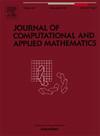具有时滞的动态寡头Stackelberg-Cournot模型
IF 2.6
2区 数学
Q1 MATHEMATICS, APPLIED
Journal of Computational and Applied Mathematics
Pub Date : 2025-09-10
DOI:10.1016/j.cam.2025.117048
引用次数: 0
摘要
本文分析了一个离散时间的Stackelberg-Cournot竞争模型,其中n个领导企业和m个跟随企业在一个受时间延迟影响的寡头垄断市场中相互作用。确定了两种均衡状态:边界均衡和正(内部)均衡,其存在取决于企业的相对成本结构。对于非延迟情况,我们导出了两个平衡点局部稳定的条件,并证明了随着调整速度的增加,会发生翻转(倍周期)分岔。当引入时滞时,边界平衡的稳定性不受影响,而内部平衡的动力学对整体时滞变得敏感。特别是,当领导者和追随者的更新有效同步时,反映了反应的集体时间,正平衡的稳定区域扩大,并且观察到neimmark - sacker分岔;相比之下,异步更新产生的动态与非延迟模型相似。数值模拟验证了我们的理论发现,并说明了混沌行为的各种途径。这些结果强调了反应时间和延迟相互作用在寡头垄断环境中塑造市场动态的作用。本文章由计算机程序翻译,如有差异,请以英文原文为准。
A dynamic oligopoly Stackelberg–Cournot model with time delays
A discrete-time Stackelberg–Cournot competition model is analyzed, in which leader firms and follower firms interact in an oligopolistic market subject to time delays. Two equilibrium states are identified: a boundary equilibrium and a positive (interior) equilibrium, whose existence depends on the relative cost structures of the firms. For the non-delayed case, we derive conditions for the local stability of both equilibria and demonstrate that a flip (period-doubling) bifurcation occurs as the adjustment speed increases. When time delays are introduced, the stability properties of the boundary equilibrium remain unaffected, while the dynamics of the interior equilibrium become sensitive to the overall delay. In particular, when the leader and follower updates are effectively synchronized, reflecting a collective timing of reactions, the stability region of the positive equilibrium expands, and a Neimark–Sacker bifurcation is observed; in contrast, asynchronous updates yield dynamics similar to those of the non-delayed model. Numerical simulations validate our theoretical findings and illustrate the various routes to chaotic behavior. These results emphasize the role of reaction timing and delay interactions in shaping market dynamics in oligopolistic settings.
求助全文
通过发布文献求助,成功后即可免费获取论文全文。
去求助
来源期刊
CiteScore
5.40
自引率
4.20%
发文量
437
审稿时长
3.0 months
期刊介绍:
The Journal of Computational and Applied Mathematics publishes original papers of high scientific value in all areas of computational and applied mathematics. The main interest of the Journal is in papers that describe and analyze new computational techniques for solving scientific or engineering problems. Also the improved analysis, including the effectiveness and applicability, of existing methods and algorithms is of importance. The computational efficiency (e.g. the convergence, stability, accuracy, ...) should be proved and illustrated by nontrivial numerical examples. Papers describing only variants of existing methods, without adding significant new computational properties are not of interest.
The audience consists of: applied mathematicians, numerical analysts, computational scientists and engineers.

 求助内容:
求助内容: 应助结果提醒方式:
应助结果提醒方式:


